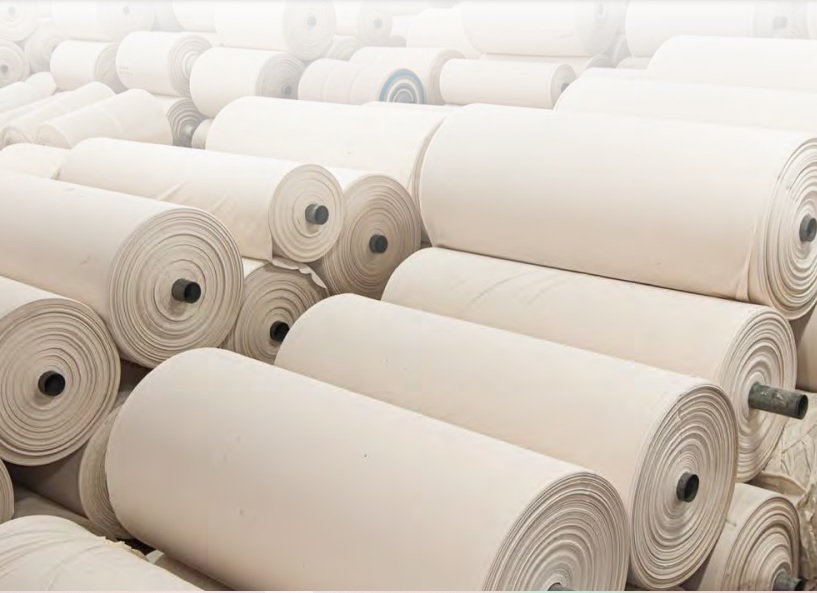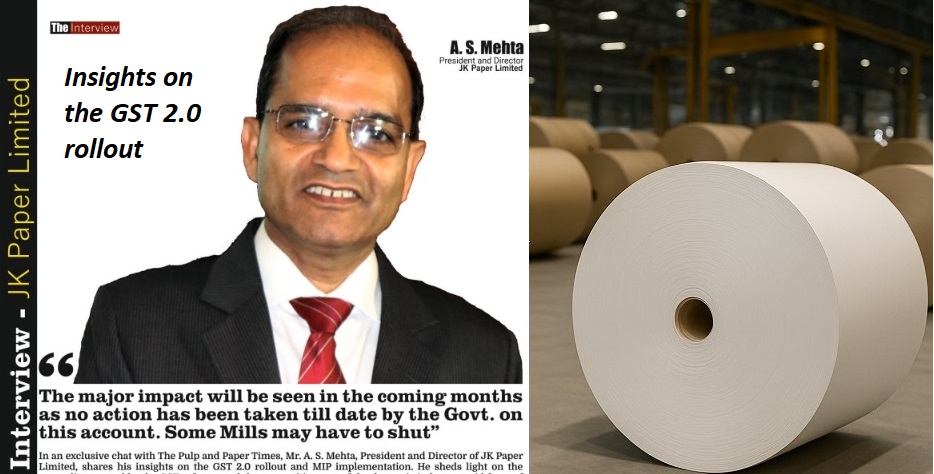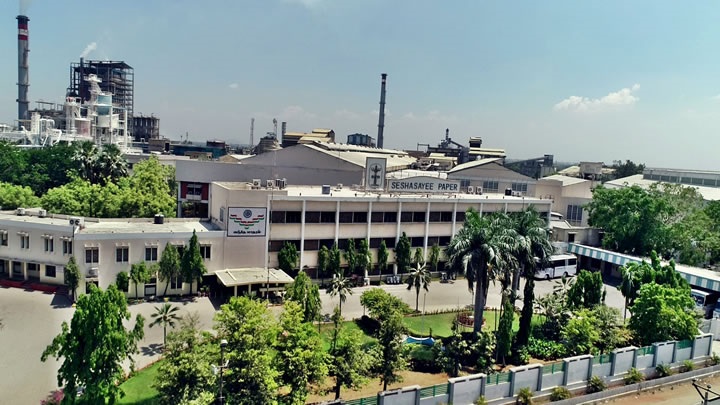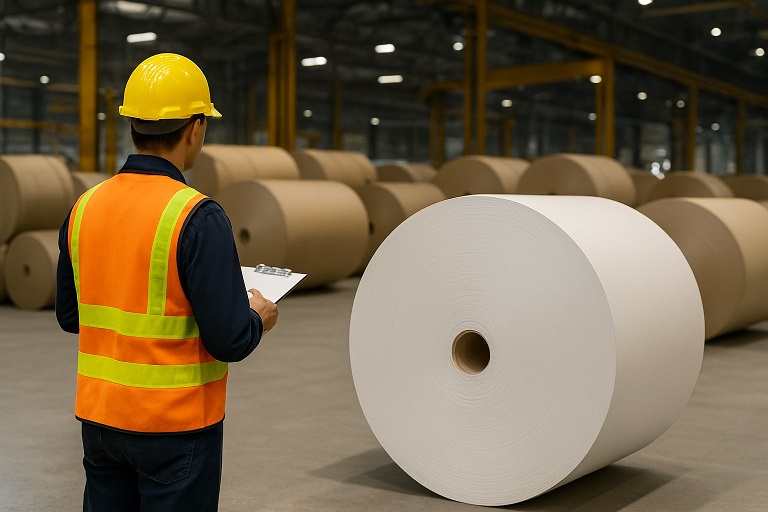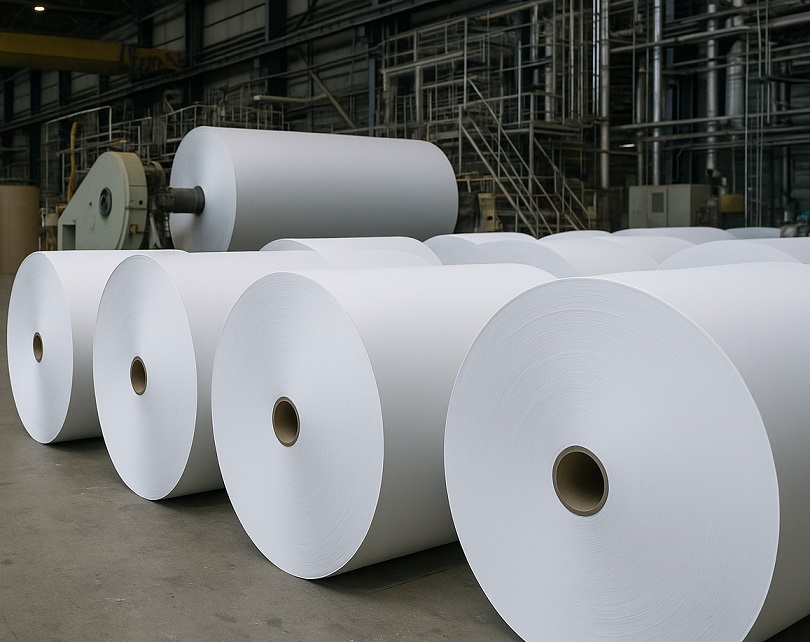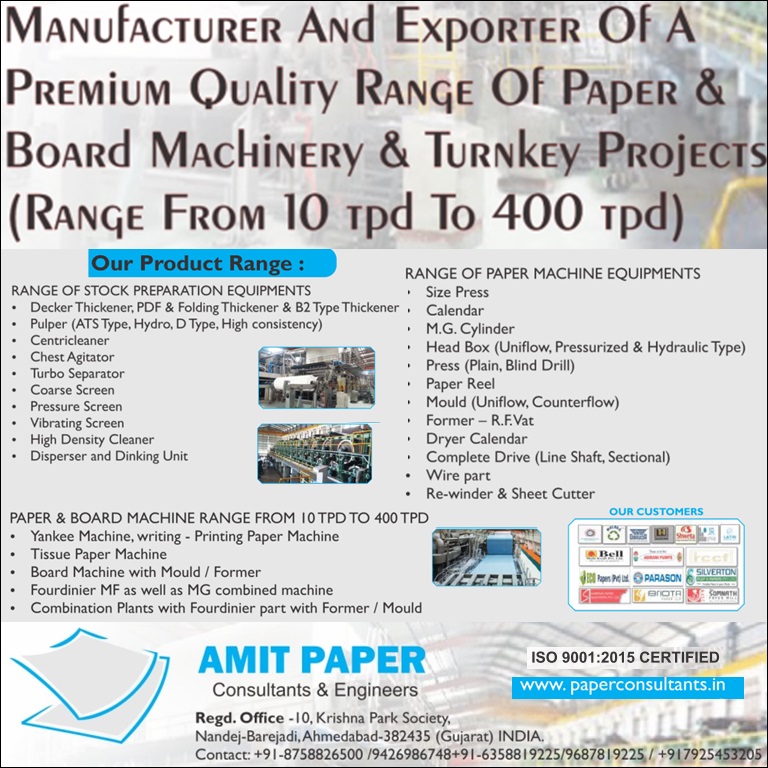Rewriting the Global Paper Narrative: India at the Forefront — Insights by Mr. Rahul Gupta of KNAM Marketing
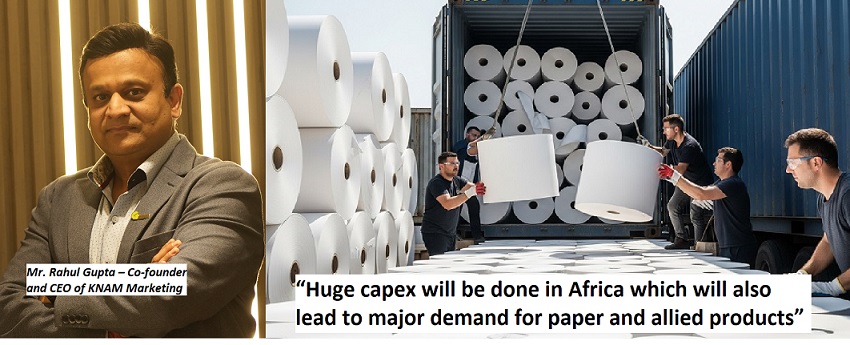
Rewriting the Global Paper Narrative: India at the Forefront — Insights by Mr. Rahul Gupta of KNAM Marketing
- While a hefty tariff is anticipated to be imposed, that shall lead to the finished paper will indeed become more expensive for US markets
- Huge capex will be done in Africa which will also lead to major demand for paper and allied products
- The growth in the copier segment will not be limited to 3–4 months, but at least 3–4 fiscals and beyond
The article below is exclusively written by Mr. Rahul Gupta – Co-founder and CEO of KNAM Marketing Private Limited. KNAM Marketing is a globally recognized B2B manufacturer and supplier of premium-quality paper, with over 15 years of experience in delivering sustainable and custom-crafted solutions to clients across industries.
The Pulp and Paper Times
The Indian pulp and paper industry is one of the growing industries across the globe. It is currently the fourth largest paper producer in the world dolling out around 5.7% of the total paper and paperboard being manufactured which results in annual production of 24 million tons of paper and paper board. What is most unique to our domestic production is that as much as 80% of the total paper manufactured in the country is from recycled paper, which is followed by agricultural waste 6.38% and about 14% from wood. On a per-capita basis, currently, India consumes only 15kg/year (which results to an annual consumption of about 22 million tons/year) as compared to about 200 kg/year in the developed markets with a global average of 57kg/year. Essentially, it is one of the few industries, that is subtly working towards the nation’s Net Zero Mission aligned with the judicious use of paper.
Industry estimates project that our domestic consumption will double in the next few fiscals, with annual consumption reaching a healthy 30 million tones. This increase in consumption will lead to the entire supply chain benefitting as an increased consumption will lead to additional wastepaper being available for recycling which in turn will be supplied to both domestic and international markets. Even in this sector, our consumption is low, as compared to international standards. Indian markets recover only about 25% of paper consumed as compared to a global average of about 58%. As an industry, we must advance in this area to help reduce deforestation and support a circular economy. Benefits include 75% less air pollution and significantly lower water use in manufacturing. Even a 1% rise in wastepaper recovery can save 0.2 million tonnes of raw material, 2,750 MW of power, and 7.7 million units of water.
Post COVID almost every industry has grown, and we have seen similar growth in the paper industry as well. The trickle-down effect has also benefited the scrap paper and paper recycling industry. In developed markets like Europe/Middle East, there is extensive use of paper in various sectors such as commercial (offices/newspapers), educational (books/copies) and hospitality (paper used to wrap food items etc.). Currently, the global paper and pulp consolidated market size stands at about $360 billion and is projected to touch $391 billion by 2032, which boils down to a CAGR (compounded annual rate of growth) of about 1%. Incidentally, even with a 1% CAGR paper industry has achieved these numbers; imagine what numbers can be achieved even if we manage to grow at a 3% CAGR! The Indian paper industry has a solid backbone that is supported by about 850 paper mills functioning Pan- India supplying all types of paper and allied products.
However, recent policy changes such as President Donald Trump's recent imposition of a 26% tariff on Indian imports is poised to significantly impact India's paper industry, particularly affecting small and mid-sized mills that rely heavily on the U.S. market.
Key Impacts on India's Paper Industry:
• Export Challenges: The increased tariffs are expected to make Indian paper products less competitive in the U.S. market, potentially leading to a decline in exports.
• Increased Competition: The tariffs may open the door for low-cost paper imports from countries like China, Indonesia, Vietnam, and Thailand, intensifying competition for Indian manufacturers.
Now let’s look at
• Market Diversification: Indian paper manufacturers are exploring new markets to mitigate the impact of reduced access to the U.S. market.
•Domestic Focus: With the Reserve Bank of India adopting an accommodative stance and implementing interest rate cuts, there is an opportunity for the paper industry to focus more on domestic demand.
• Policy Support: The Indian government is considering measures such as extended interest subsidies and export diversification incentives to support affected industries, including paper manufacturing.
To summarise, while the new U.S. tariffs present challenges for India's paper industry, particularly for exporters to the U.S., strategic shifts towards market diversification and increased domestic focus, supported by favourable monetary policies, may help mitigate the adverse effects.
The Global Business dynamics across industries are seeing a tectonic shift with the new tariff regime imposed by the US and probably anticipated to see some transition in the way business is currently conducted. The US is amongst the highest consumer of paper with a majority of them being imported from the South- East Asian Continent. Though there’s a 90-day cool-off period as we view it, while a hefty tariff is anticipated to be imposed, that shall lead to the finished paper will indeed become more expensive for US markets, which may lead to a fall in cumulative demand. Indian exporters are evaluating and hedging for alternative emerging markets to sell their finished products. Leading the brigade will be South-East Asia, Europe, Middle East and Africa.
Speaking specifically about the European markets, it is expected to experience another round of price volatility in 2025, echoing last year’s dramatic fluctuations. Prices have already begun climbing sharply in Germany and several other countries. The surge seen in 2024 was not the result of increased demand, but rather a constrained supply across the European market. In response to fears of potential production cuts, paper mills began stockpiling recovered paper, aiming to safeguard their operations. This precautionary behavior only intensified the existing supply pressures, further straining the market.
Domestic Price scenario of Packaging paper, WPP, Copier, and Speciality paper:
Domestically, the outlook for our sector is bullish and we project that market will continue to maintain a CAGR of about 25%-27%. Key reasons for this growth will be our continued dependence on digital platforms for all our personal needs. Several urban homes are now using quick commerce apps for urgent and impulse purchases.
Another emerging vertical is the projected demand from the F&B industry. The millennials are heavily dependent on ordering in both in homes and offices. Even in bakeries, breads and other items such as cheese, patties and sandwiches are wrapped packing paper; we project that revenue generated from this customer base will be a major contributor. This is even applicable to food items which are sold on the streets.
Likewise for copier paper too, as Indian economy is projected to grow at health rates, expansion of businesses will further push the consumption of copier paper from establishments. In this vertical, we see that increased demand will emerge from consulting, legal and marketing sectors. This growth will not be limited to 3-4 months, but atleast 3-4 fiscals and beyond.
The trickle-down effect will be on recycling of waste paper which will be pushed back into domestic and international markets.
Paper Import growth in various segments: reason and future anticipation:
Paper imports have also surged over the last few fiscals, which has reached about $1 Billion. Key reasons for this is that it is a cheaper option for domestic buyers. We import heavily from countries like China and Indonesia which is hurting the domestic industry. The Governments of these countries heavily subsidise domestic industries, hence they are able to quote competitive prices.
At a marco level, paper board corners the largest share of our imports. This in turn is detrimental to our domestic industry as dependence on imported items will result in lesser demand for domestic products, causing a domino effect on the industry, resulting in cutting of revenue, profits and even manpower.
There is an urgent need for the Central Government to make this industry a level-playing field. Strategically relevant levies need to be imposed so that prices of imported products can be at par with domestic players.
We at KNAM have seen a substantial rise in the demand of our scrap paper from the Europe & USA and exports of finish paper to the Middle Eastern region. We are also observing that in the years to come, major demand will be from these regions, especially Africa and Europe. Huge capex will be done in Africa which will also lead to major demand for paper and allied products. Geographically also, African markets will be lucrative for Indian exporters due to the proximity of both continents.
The world order of doing business may see many new patterns emerge, and many dynamics shall be at play while the solutions and we may witness ways of doing business see a win-win for all in times to come.
About KNAM Marketing
KNAM Marketing Private Limited is a globally recognized B2B manufacturer and supplier of premium-quality paper, with over 15 years of experience in delivering sustainable and custom-crafted solutions to clients across industries. As an FSC (Forest Stewardship Council) certified company, KNAM serves as a one-stop destination for various paper needs, including Finish paper, Recycled fiber, and Stocklots. To meet the growing global demand for customized paper, the company has established a strong business network across India, the UAE, Europe, Africa, China, Indonesia, Egypt, and Southeast Asia, enabling it to offer tailored solutions at optimal price points. With strategically located offices in India, the UAE, and Singapore, KNAM ensures smooth and efficient trading operations, providing clients with a seamless and exceptional customer experience backed by global reach and local expertise.
Web Title: Rewriting the Global Paper Narrative: India at the Forefront — Insights by Mr. Rahul Gupta of KNAM Marketing





 Join WhatsApp Group
Join WhatsApp Group Join Telegram Channel
Join Telegram Channel Join YouTube Channel
Join YouTube Channel Join Job Channel (View | Submit Jobs)
Join Job Channel (View | Submit Jobs) Join Buy Sell Channel (Free to Submit)
Join Buy Sell Channel (Free to Submit) Paper News Headlines Channel (Free to read)
Paper News Headlines Channel (Free to read)





